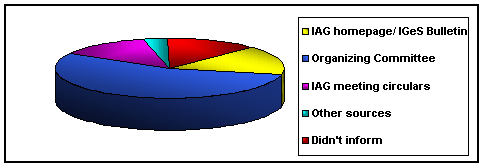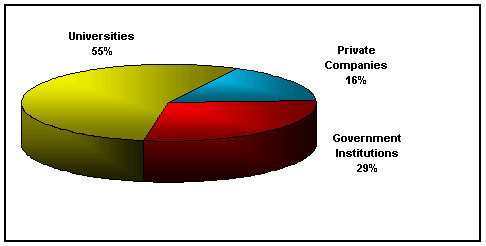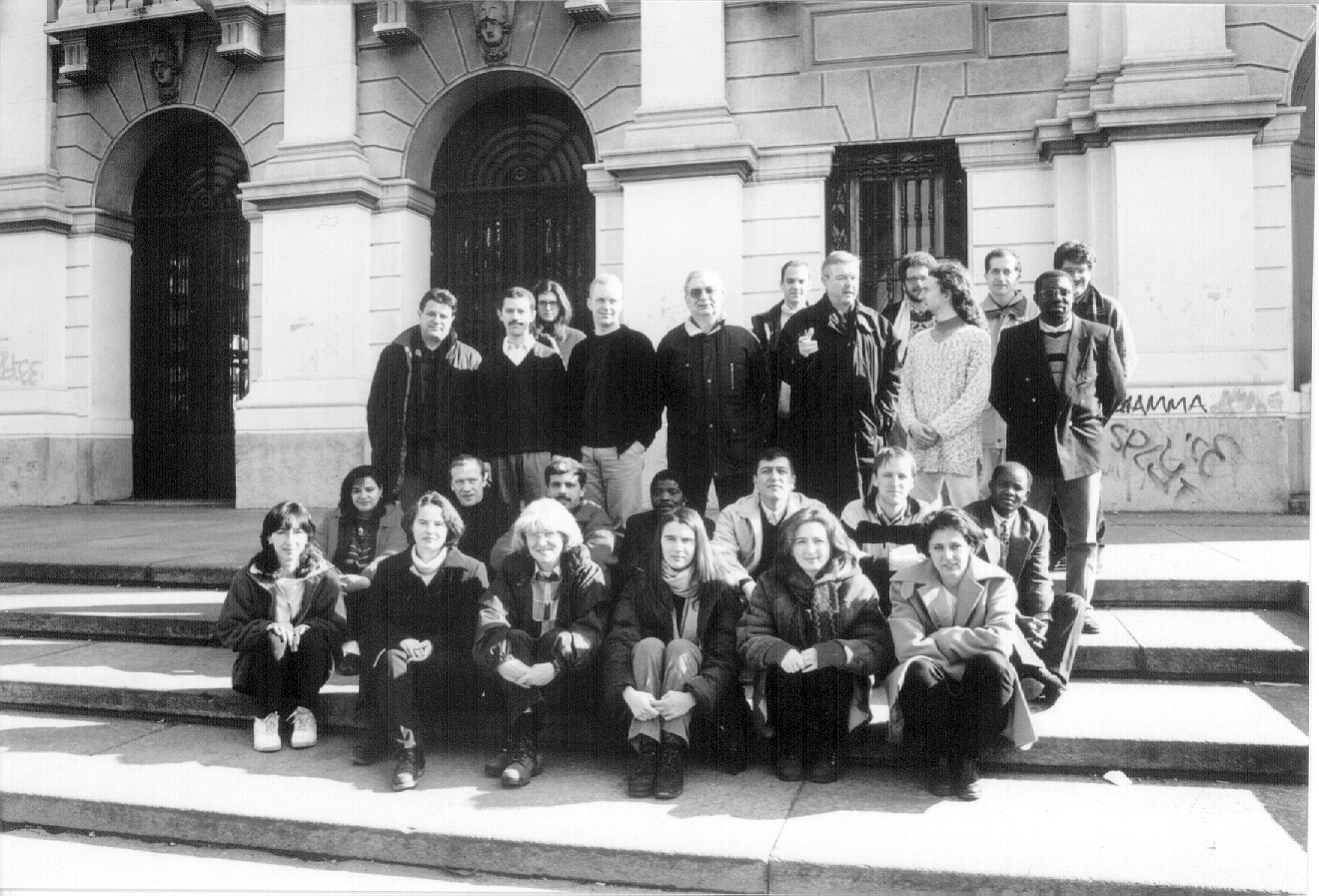FIRST CONTACT
During the GRAGEOMAR96 meeting in Tokyo, Japan, I was contacted by Dr. Michael Sideris in order to verify the possibility of IBGE host The Second International School for the Determination and Use of the Geoid. The idea was to take advantage of the IAG meeting that would happen in Rio de Janeiro, Brazil, when the teachers and many possible students would come and the expenses of air tickets for the school would be cut. At that time, the following items were stated:
- TEACHERS:
|
|
|
|
| 1st | Fernando Sansó | Fundamentals of Geoid Computation |
| 2 nd | Nikos Pavlis | Geopotential Models |
| 3 rd | Christian Tscherning | Collocation |
| 4 th | René Forsberg | Terrain Effects on Geoid |
| 5 th | Michael Sideris | FFT Computation |
As the teachers would be already in Rio for the IAG meeting and the only support they agreed was just receive the accomodation and living expenses.
- STUDENTS:
The school would be opened to graduate students, teachers and government employees.
- REGISTRATION FEE:
Typical US$ 500. Would be checked the possibility of including accomodation, local transportation and one or two dinners. The lecture notes and all software would be provided free only for research use by universities and government agencies.
- LECTURES:
5 days from 9 - 12 each morning for the theoretical part and 14 -18 for practical experience of using the software.
- COMPUTERS:
| At least 2 UNIX - workstations with FORTRAN and C or C++ compilers. | |
| Several PC's (5 to 8) all networked together and with the workstations- Xwindows software would be desirable. | |
| All computers should have ETHERNET connections for E-mail and for software transfer. | |
| Some graphical capabilities for displaying geoid and gravity anomaly maps. | |
| RAM requirements: 16MB computer minimum and 32 MB preferable (at least for each of the workstation) | |
| Hard disk space of 500 MB. |
- ADVERTISING:
EOS (AGU), Journal of Geodesy, IGeS Bulletin, E-mail, Brazilian geophysical and geodesy societies and web page.
INVITATION AND PLANNING
The first circular was sent to the following groups:
| IAG web page; | |
| SIRGAS (South American Geocentric Reference System) representatives and many other research institutions, universities and every group that used to receive the SIRGAS bulletin; | |
| IAG/SBC meeting circular; | |
| by fax to the representatives of the South America Geoid Comission; | |
| by E-mail to the Brazilian Universities that have regular courses on geodesy (graduation and post-graduation); | |
| Brazilian Oil Company; | |
| Bernese GPS software students of february and march 1997. |
STUDENTS
We were contacted by 45 people from the first anouncement to the end. We've got a final number of 31 students.


| 1 | Sonia Costa | 20 | Nelsi Cogo de Sá |
| 2 | Frank Lemoine | 21 | Silvio R. Freitas |
| 3 | Merrin Pearse | 22 | Luciano Montenegro |
| 4 | Fabian Barbato | 23 | Alfonso Tierra |
| 5 | Karla Edwards | 24 | Fernando Sansó |
| 6 | Assumpcio Termens | 25 | Laura Sanchez |
| 7 | Denizar Blitzkow | 26 | Tscherning |
| 8 | Graciela Font | 27 | Nikos Pavlis |
| 9 | Elaine Nunes Jordan | 28 | Steve Kenyon |
| 10 | Michael Sideris | 29 | René Forsberg |
| 11 | Cláudia Tocho | 30 | Kátia Duarte Pereira |
| 12 | M. Cristina Pacino | 31 | Cristina Lobianco |
| 13 | Melvin Hoyer | 32 | Ove Christian Dahl |
| 14 | Freddy Fernandez | 33 | A. Simões Silva |
| 15 | Guilhem Moreaux | 34 | Walter Subiza |
| 16 | Mario E. Borgna | 35 | Luiz Paulo S. Fortes |
| 17 | Eugen Wildermann | 36 | Marco A. da Silva |
| 18 | José Milton Arana | 37 | Frederico Marinho |
| 19 | Mauro A. Sousa |
Distribution of the students by country:

Month and number of students that made their inscription to the Geoid School:



During the week of February from 15 to 19, 1999 the International Geoid School on the Determination and Use of the Geoid has been held in Milan.
The courses included:
Old and new Lecture Notes have been provided and IGeS software as well as numerical exercises have been made available to the students.
